Exploring the Sasaguri Tunnel
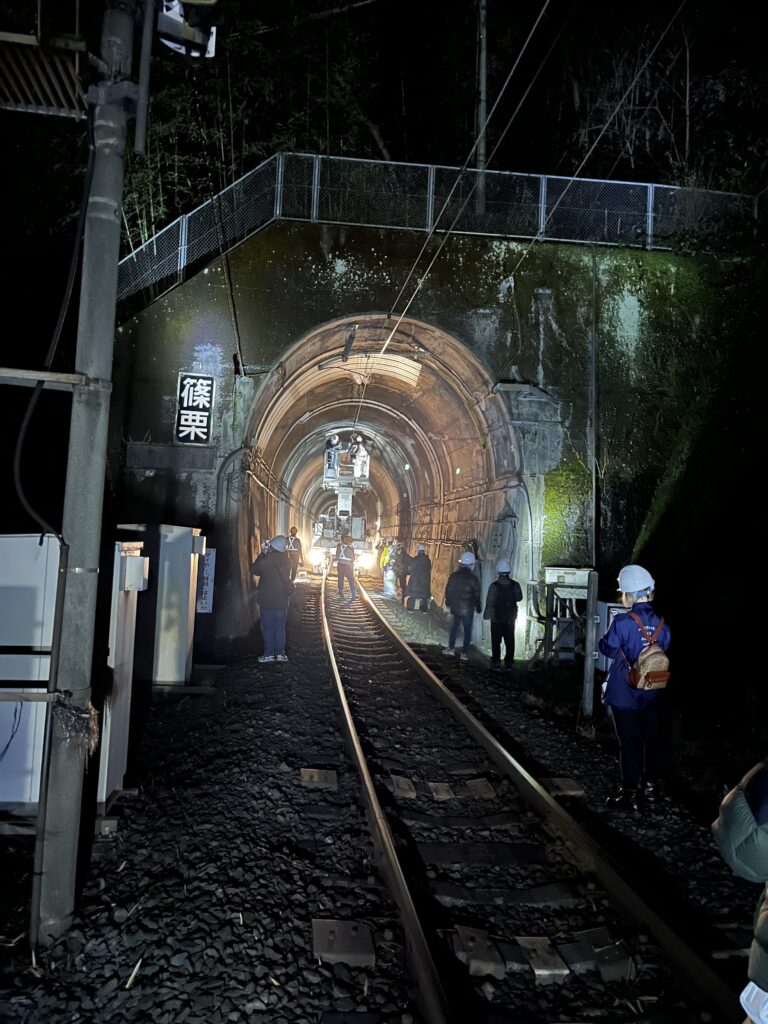
On Sunday, March 5, 2023, I explored JR Kyushu’s Sasaguri Tunnel shortly after midnight. This exploration was part of a special event JR Kyushu hosted for about 30 members of the public. While Japan is world famous for its trains, few foreigners realize how deep train culture permeates into Japan. I previously wrote about my experiences riding Nishitetsu’s Rail Kitchen Chikugo and visiting JR Kyushu’s Omura Shinkansen depot, but this was different. Have you ever wanted to (legally) explore a train tunnel? Have you ever wanted to (safely) touch the electrified wire which powers the train? Here are my experiences exploring the Sasaguri Tunnel, the longest railway tunnel in Fukuoka Prefecture.
PSA
The following events were part of an organized tour by the Kyushu Railway Company (JR Kyushu). Never enter train tunnels or touch railroad electrical equipment without proper supervision. Tracks are for trains; the fact you can read this indicates you are not a train.
About the Sasaguri Tunnel
The Sasaguri Tunnel is a single-track railway tunnel that cuts through the mountains dividing the town of Sasaguri from the city of Iizuka. This vital rail link opened in 1968 and extended the Sasaguri Line East from Sasaguri Station to Keisen Station, where the line now terminates and merges with the Chikuho Main Line.
The tunnel is the longest railway tunnel in Fukuoka prefecture at over 4,500 meters long (approximately 2.8 miles long), beaten only by the Nagasaki Tunnel in nearby Nagasaki Prefecture for the longest tunnel in Kyushu.
About the Sasaguri Line
If you have ever taken the Shinkansen to Hakata Station, you may have heard Donna Burke’s announcement about changing to either the Kagoshima Line or the Sasaguri Line. The Sasaguri Line, while terminating at Hakata, refers to a single-tracked rail line that connects Yoshizuka Station in Fukuoka with Keisen Station in Iizuka. The Fukuhoku Yutaka Line is a train line that runs on three different rail lines (Kagoshima, Sasaguri, and Chikuho). In other words, all trains on the Sasaguri rail line are served by the Fukuhoku Yutaka train line. As mentioned previously, the line used to terminate in the town of Sasaguri before the tunnel was constructed. The line was electrified in 2001.
How Did I Hear About This Event?
In all honestly, I consider it chance that I heard about this event. I stumbled upon some rail-related news on the Japanese job posting site MyNavi. While reading the articles auto-translated into English, I found a post about JR Kyushu’s Sasaguri Tunnel Night Walking Tour. I got excited and immediately clicked the JR Kyushu booking website link. One of my good friends, fluent in Japanese, helped me book my ticket for this special event. Ironically enough, JR Kyushu sent my confirmation email in English! Thank you so much for helping me book this event, Linden; I could not have done it without you.
While I cannot speak about other Japanese rail companies, JR Kyushu is missing a huge opportunity to attract foreign tourists interested in trains (like me). I would love to learn more about events like these in the future, and I wish they were easier to find on the English-speaking web.
March 4, 2023, at 11:00 PM: Check-in
I headed to Hakata station from my home station just before 11:00 PM. While there, I checked in for the tour outside the West (Hakata) exit of Hakata Station, near the five glass elevators, which usually whisk patrons to the top of the massive station. About 30 of us, mostly older men, were excited about the experience ahead.
This was an excellent opportunity for me to practice speaking Japanese with locals. I was the only foreigner on the entire tour. Next, I listened carefully to my instructions to head to Platform 8 through the central ticket gate. I was not 100% sure what to do, so I observed what the locals, also wearing green lanyards, did. I followed them to the waiting area on platform 8, where I sheltered from the cold, 40-degree Fahrenheit (5 degrees Celsius) air.
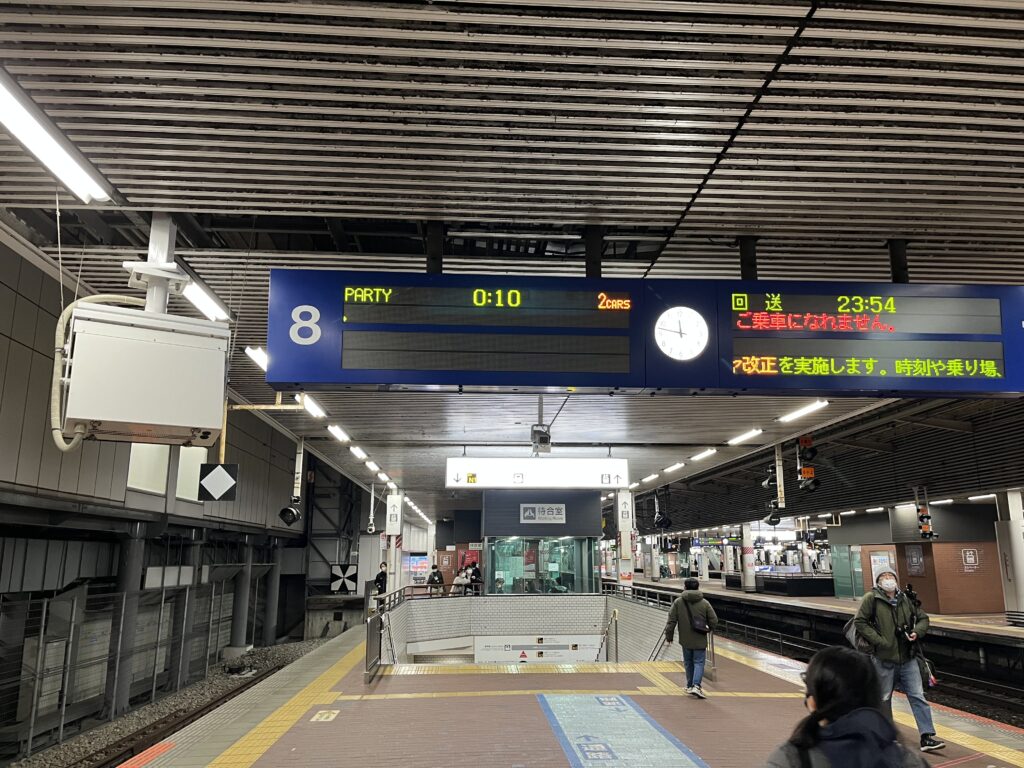
Waiting at Platform 8
We waited as the last trains departed from Hakata station for the evening. I observed a large crowd of people patiently waiting for the final Fukuhoku Yutaka Line train bound for Shin-Iizuka to arrive and depart. While the digital signage listed this train as the last train of the evening on this line, it was not true this night. Scheduled for 12:10 AM, a special “party” train, made up of a diesel multiple unit set, pulled into Platform 8 for our boarding.
I had a little fun as we waited for our white and blue train to arrive. While waiting, I made funny poses in front of the security camera and monitor as it spied on us and my shenanigans. I also caught the attention of two younger tour participants, who chucked with me as I made a goof of myself. They even joined me as we took photos of ourselves having fun. Friends, this is how you make new friends in Japan!
March 5, 2023, at 12:10 AM
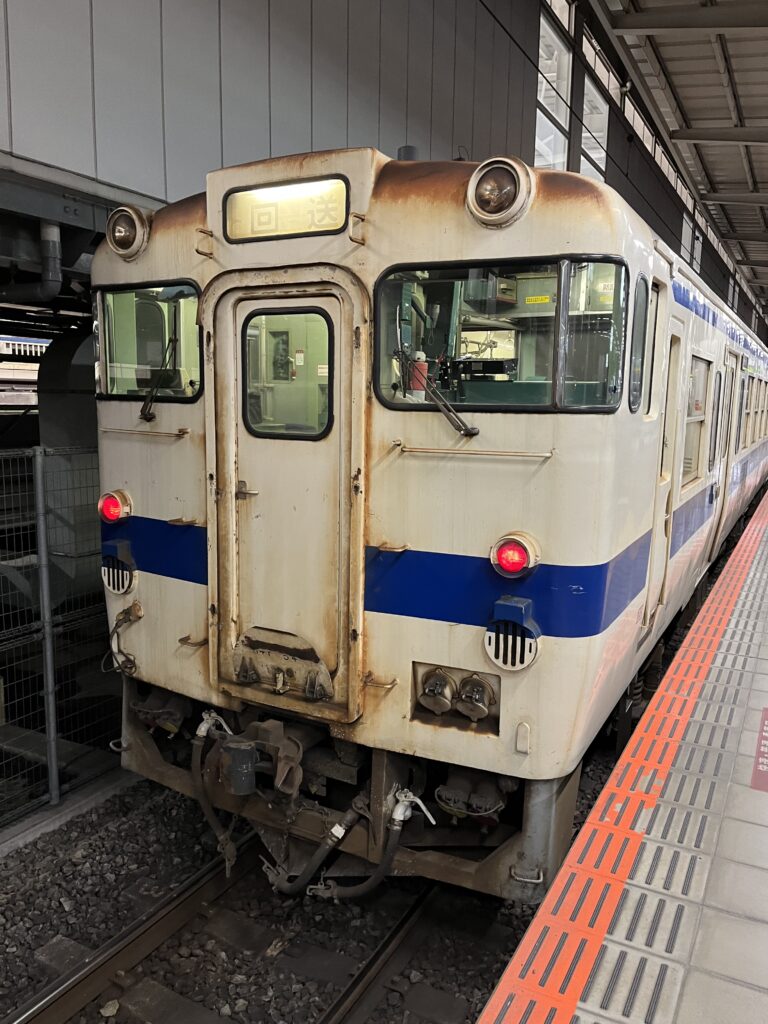
Our special party train – a KiHa 147 series diesel multiple unit set – wearing special sabots for the night tour departed Platform 8 of Hakata station on time. JR Kyushu does not typically run diesel trains on the Fukuhoku Yutaka Line, but they did tonight as they would cut the electricity to the line. We slowly made our way through the stations of Kasuya and Sasaguri towns, passing through the Sasaguri Tunnel before arriving at Kurobaru Station. Before our arrival, railway staff gave each of us a pair of gloves, commemorative helmets, flashlights for our safety, and a paper with a QR code linking to a special auction. JR Kyushu auctioned off the special sabots used on tonight’s train and a copy of the driver’s schedule. Of course, I placed bids on these items!
Kurobaru Station is a rural and underused station at the East end of the tunnel. According to Japanese Wikipedia, the station’s daily average traffic is less than 100 customers. Many local trains on the line skip this station. Tonight, it would serve as our starting point as we ventured through the cold, damp, and slender tunnel.
Before we could enter, railway staff entered the tunnel. First, a special truck designed to run on rails entered the tunnel, followed by five aluminum rail carts that would shuttle us through the tunnel later that night. Once inside, railway staff guided us through the tunnel to explore for about one mile.
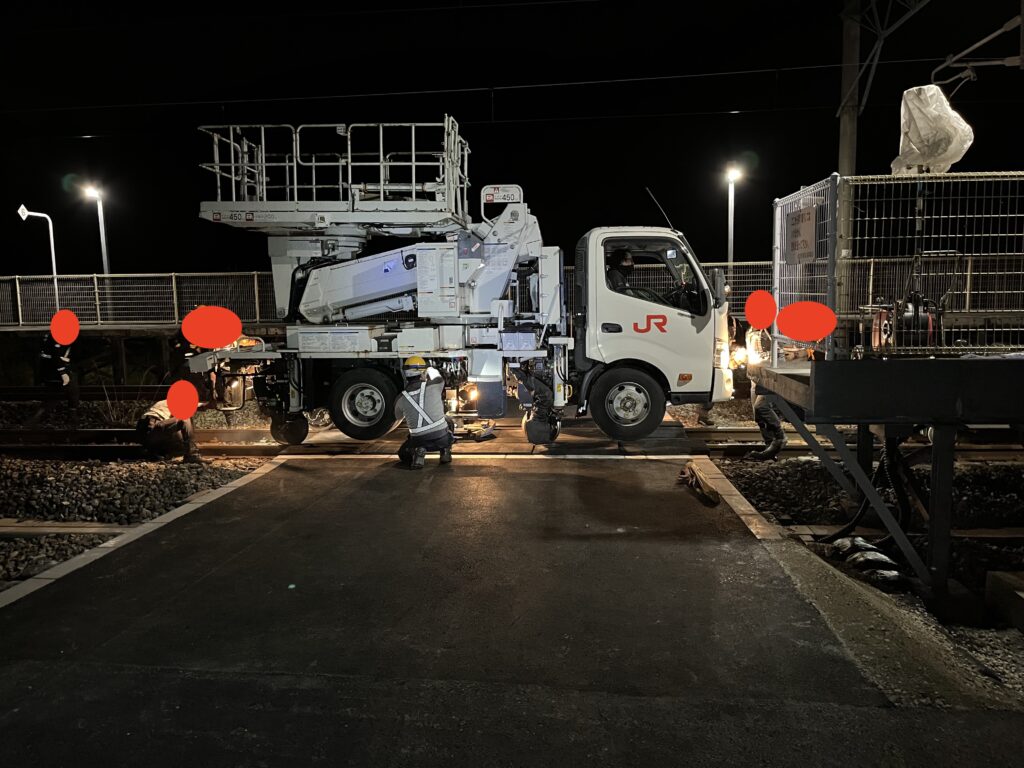
Inside the Sasaguri Tunnel
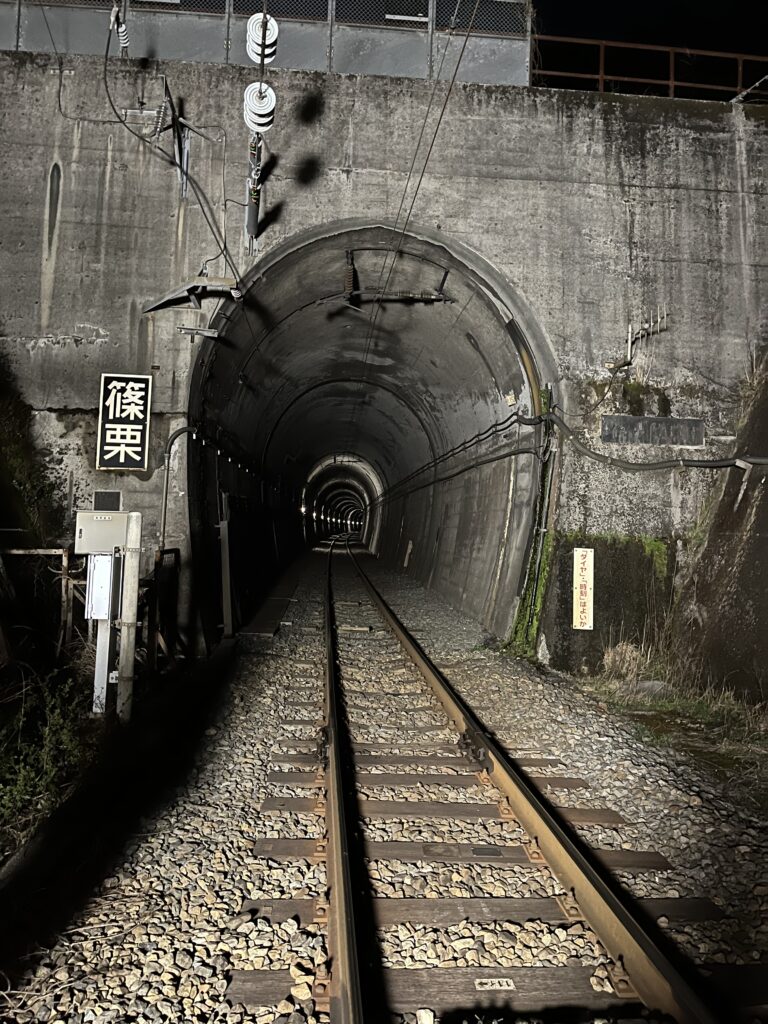
We entered the Sasaguri Tunnel on foot shortly after 1:00 AM. I took many pictures as I admired the grandeur of the 55-year-old tunnel. There was a surprising amount to see, ranging from signs plastered on the walls noting the nearest exit to cutouts featuring telephone boxes, train signals, and electrical equipment. There was even a tanuki family sleeping comfortably along the tracks of the tunnel.
The tunnel was narrow for trains but tall for us humans. The electric wiring, used for powering trains, nearly touched the tunnel’s roof. The interior walls were lined with soot, as this line used to be operated by diesel locomotives before its 2001 electrification. The tracks were bumpy at various points throughout the tunnel and could use replacement. The tunnel could benefit from improved track maintenance. I have ridden several trains through the tunnel, and it was always a bumpy experience. I now understand why.
“Inspecting” the Sasaguri Tunnel
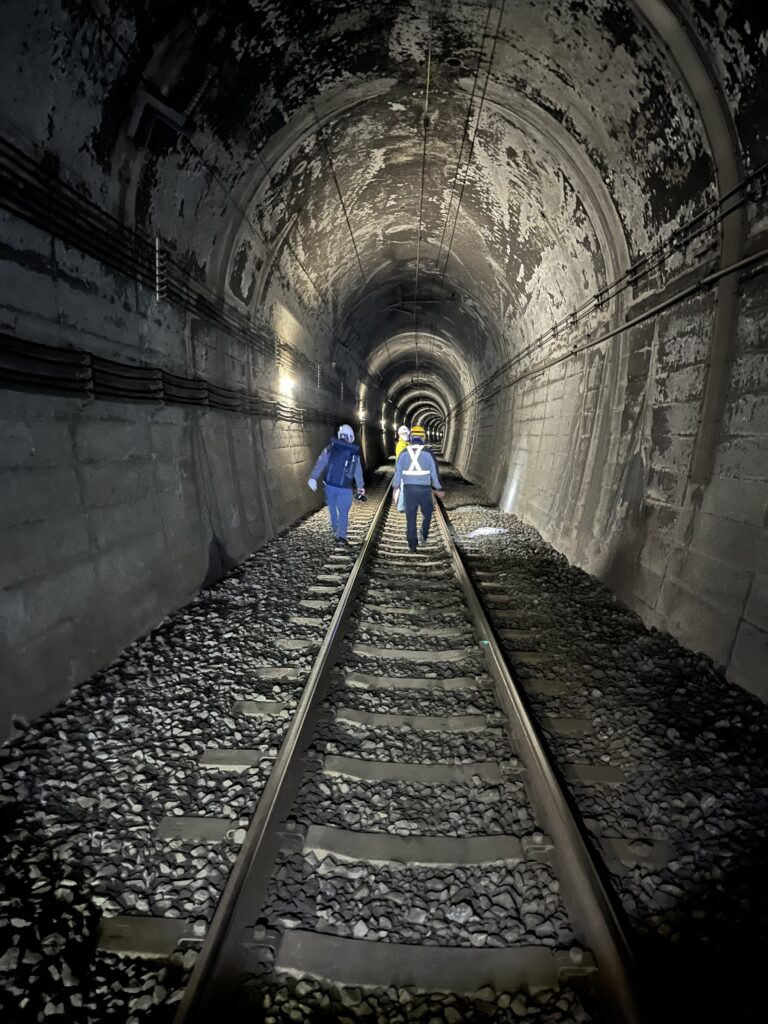
While about 15 of us explored the tunnel and listened to our friendly guides, some workers inspected the tracks. They noted problems with white chalk as we watched. We felt like we were a part of the nightly rail inspection JR Kyushu performs every night. After about one mile of walking through the tunnel, we boarded one of five rail carts that would transport us to the west end of the tunnel.
I was one of the lucky ones and scored a forward-facing seat on the lead car. The car operator sat behind me as he shifted his gears forward, sending us speeding along slowly. We stopped about eight minutes later to allow some passengers to switch seats so the backward-facing passengers could face forwards. I stayed seated as the driver sat behind me. We sped through the tunnel for another eight minutes until reaching the west end near Kido-Nanzoin-mae Station.
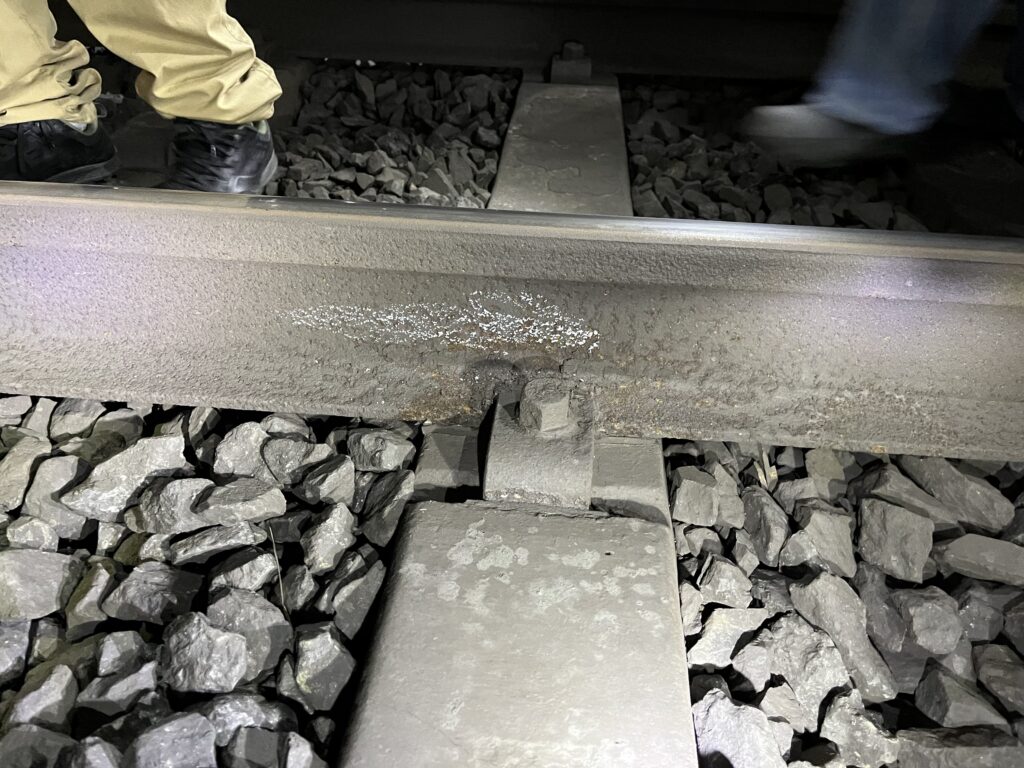
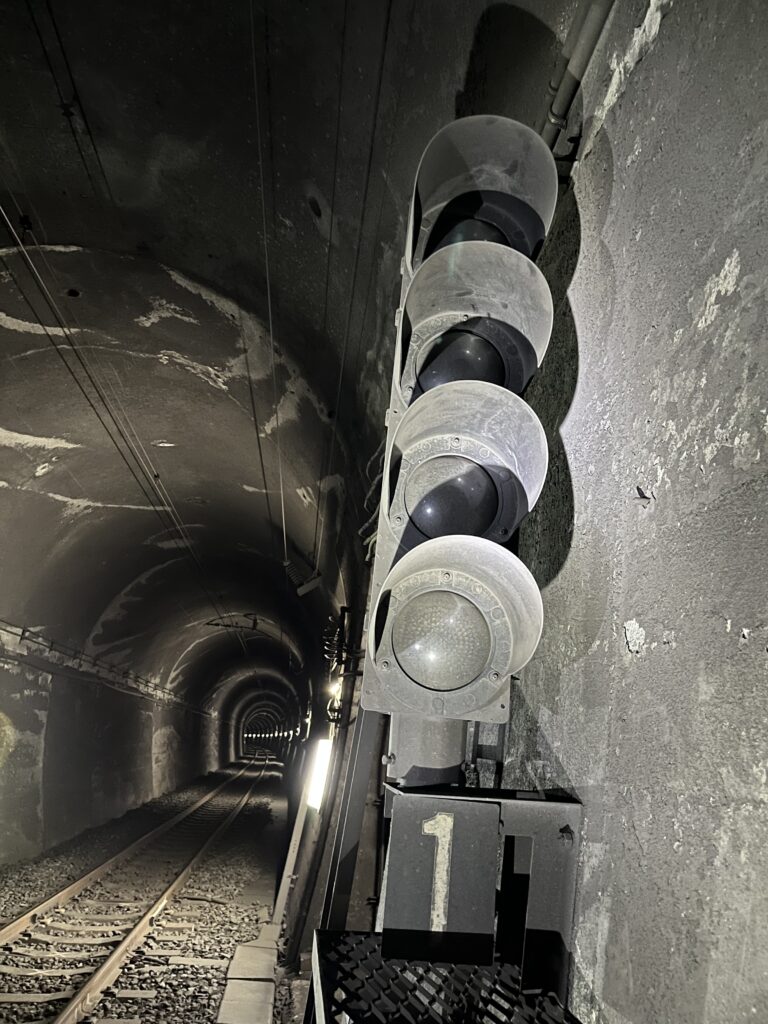

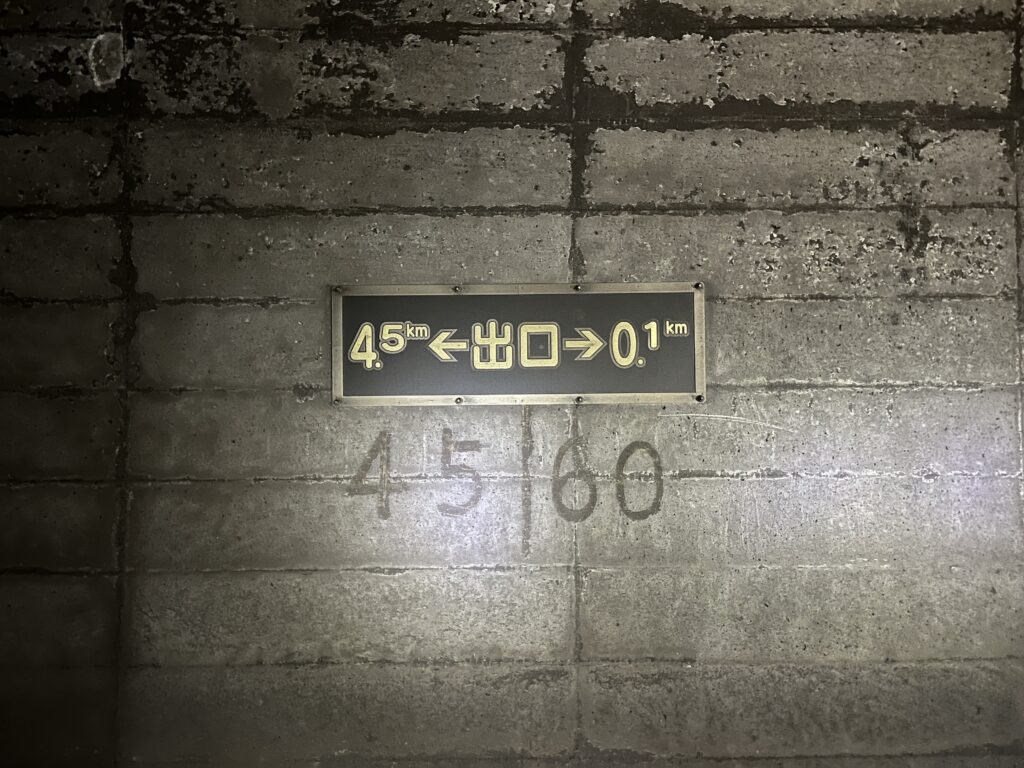
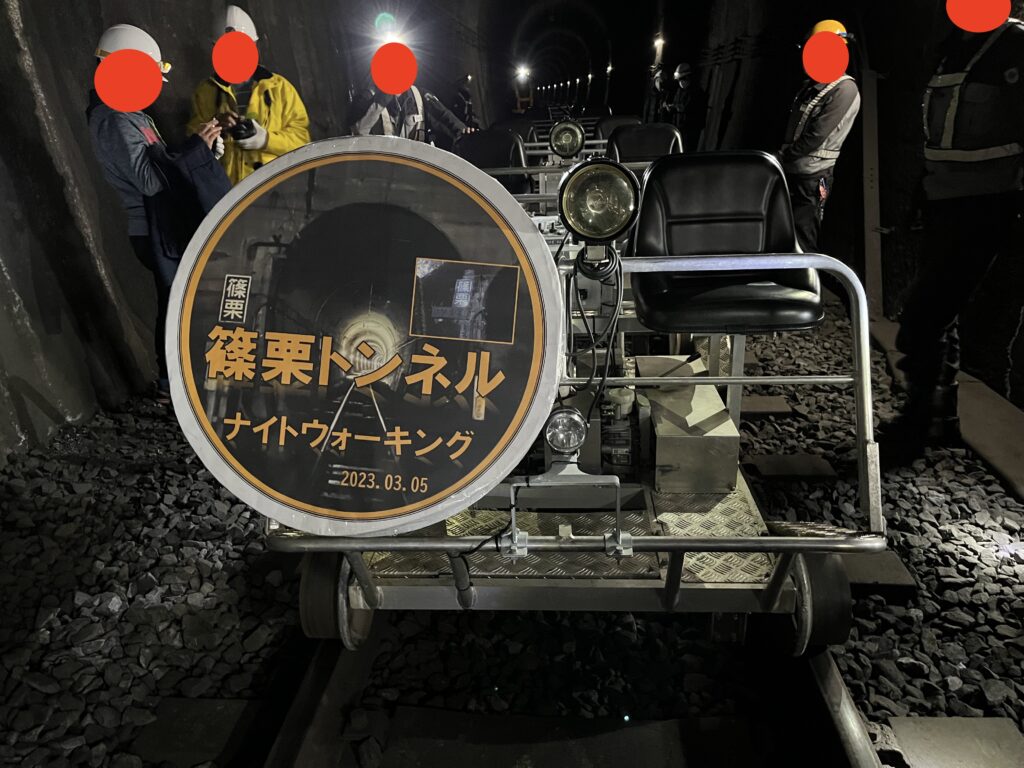
Touching the Wire
Remember that special truck I mentioned earlier? It was here waiting to take guests up his cherry picker to the top of the tunnel. While there, we got to touch the non-electrified wire, which powers the electric trains that operate through the tunnel. It was a surreal experience; I never imagined I would ever touch the wire! Many guests also touched the roof near the tunnel’s western end while I was too busy wrapping my gloved left hand around the thin rusty wire. Woah. How many living foreigners in Japan can say they have done that?
Shortly afterward, we emerged from the west portal of the Sasaguri Tunnel, where railway staff guided us to Kido-Nanzoin-mae Station, a few hundred feet away. This concluded the railway tunnel portion of the evening.

Late Dinner at Nanzoin Temple
Railway staff soon guided us off the tracks at Kido-Nanzoin-mae station towards the dining hall at Nanzoin Temple. You might be familiar with this famous temple, featured in Abroad in Japan’s Journey Across Japan series. The temple is home to the largest reclining Buddha statue in the world, which houses ashes of the Buddha donated by the Myanmar government to commemorate the temple’s aid during a natural disaster there. I should write about this spectacular temple sometime. Let us get back on track!
I ordered the curry udon for tonight’s dinner, and it was delicious; the noodles were springy, and the curry was flavourful but not too overpowering. It was the perfect meal for this cold, wintry night. While dining, I practiced my Japanese with fellow train enthusiasts as we talked about some of the trains we have seen across Japan. I shared pictures with them, and they sent me pictures as well. Remember the two friends I met on Platform 8 at Hakata Station? It turns out one of them speaks English! We met up again during dinner and chatted about JR Kyushu. One recently moved to Fukuoka, and we will meet again soon.
All guests were given sabots and stickers to customize. Most of us, myself included, applied stickers to our black and white souvenirs marking the train’s terminals of Kido-Nanzoin-mae and Hakata for the return trip. Some guests customized their own sabots by writing their hometowns.

5:10 AM. End of the Tour
We left Nanzoin Temple and returned to the station shortly before 5:00 AM. The air was silent, lacking the sound of roaring trains. The air was cold and damp while we were shivering, waiting for the warm sanctuary of our old diesel-powered train. Our train arrived at 4:50 AM. We boarded the train. One of my new friends alerted me to a picture opportunity where we could pose with our custom-made sabots, which we made during dinner. I lined up, took my picture with my commemorative sign, and reboarded the train.
The train left on time at 5:10 AM and hurried its way back to Hakata Station. During our ride, the railway staff announced the winners of tonight’s auction. Earlier, I entered the auction to win either one of the sabots used on tonight’s train or a copy of the driver’s schedule. I was among the lucky winners of one of the commemorative sabots used on tonight’s train. I have since paid JR Kyushu 10,000 yen for my sabot and await payment. Meanwhile, my passbook (Japanese bank book) now shows a bank transfer made out to JR Kyushu, thus creating another souvenir for me.
We arrived back at Hakata Station around 5:31 AM and concluded the tour. Since the Fukuhoku Yutaka Line resumed service at 6:10 AM, I decided to hail a taxi home. My home station is along this line, so I find it ironic that I did not take it home.
Reflection
I like trains, as evident by my previous blog posts on the subject matter. I am also seeking new and unique opportunities to do things train-related in Japan, and JR Kyushu hits the spot. JR Kyushu is famous for its tourist trains, such as the Yufuin no Mori and the Seven Stars in Kyushu, ranked as the World’s Most Luxurious Train by Conde Nast Traveller. Tonight’s tour was one of the most incredible experiences I have participated in Japan.
In addition, one of my goals for 2023 is to put myself out there and meet new people. This evening, I made at least two new friends over our shared interest in trains. This also ended up being a good opportunity for one of my new friends to meet international friends in the area. Funny how things work out.
To the kind folks at JR Kyushu, thank you for hosting this one-of-a-kind event, and to the staff I met, thank you for speaking English with me when sorting out payment details for the commemorative sabot. You were not obligated to do so, but I appreciate your trying to accommodate me very much. My Japanese language skills may be poor, but I must try harder.
If anyone at JR Kyushu is reading this, PLEASE offer more opportunities for foreigners to participate in these experiences. I guarantee this will help your railway business and attract tourists to Kyushu. May this blog post shine a light on what unique experiences you have to offer.